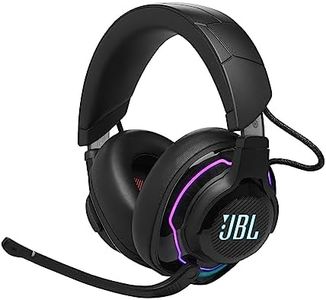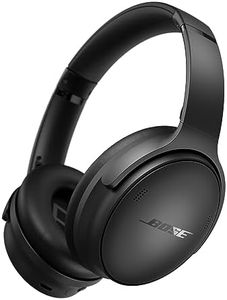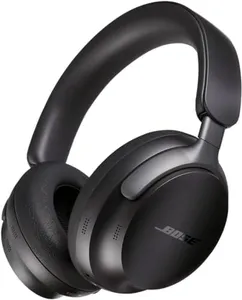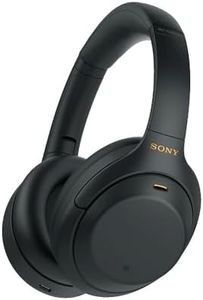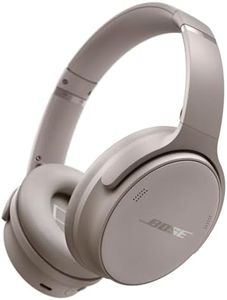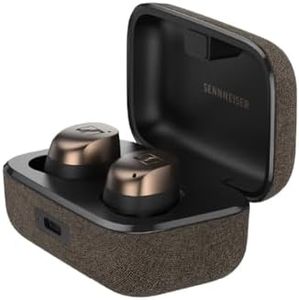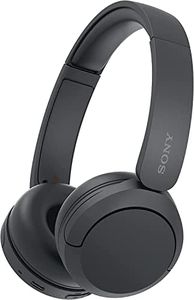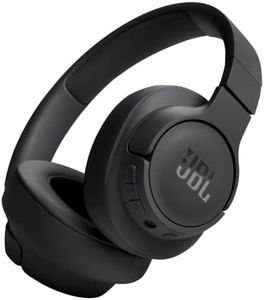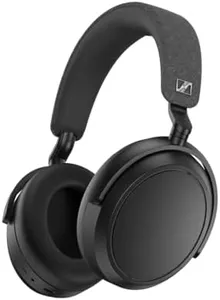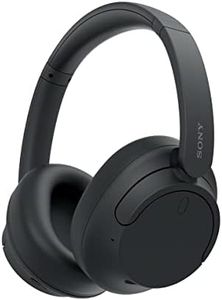We Use CookiesWe use cookies to enhance the security, performance,
functionality and for analytical and promotional activities. By continuing to browse this site you
are agreeing to our privacy policy
10 Best Bluetooth Headphones
From leading brands and best sellers available on the web.Buying Guide for the Best Bluetooth Headphones
Choosing the right Bluetooth headphones can make a huge difference in your daily listening experience, whether you need them for music, calls, workouts, or just blocking out noise. To make the best choice, think about how and where you'll use your headphones most often, and which features matter most for your lifestyle. Understanding some key specifications will help you narrow things down and ensure you pick a pair that is comfortable, practical, and delivers the sound quality you desire.Battery LifeBattery life refers to how long the headphones can operate on a single charge before needing to be recharged. This is crucial if you use your headphones for long periods, such as during commutes, travel, or extended work sessions. Typically, battery life can range from a few hours to over 30 hours for larger (over-ear) headphones. For casual daily use, 5–10 hours may be enough, while people who travel or work long hours will benefit from 20+ hours of playtime. Consider your usual listening sessions and pick accordingly.
Comfort and FitComfort and fit relate to how well the headphones feel on your head or in your ears over time. There are three main types: over-ear, on-ear, and in-ear. Over-ear headphones provide cushioned ear pads and are great for comfort over long sessions, but are bulkier. On-ear headphones are lighter but rest on the ears, which can cause discomfort for some. In-ear models (earbuds) are compact and portable, but fit and comfort depend on ear shape. Your best pick depends on how long you wear them and in which environments – prioritize comfort if you use headphones for hours at a time.
Sound QualitySound quality is about how clear, balanced, and rich the audio output is. It covers elements like bass, midrange, and treble. Some headphones offer a neutral sound (good for all music types), while others boost bass or vocals. There’s also the level of distortion at high volumes to consider. If you love music or listen to podcasts, prioritize sound fidelity. For exercise or casual use, you may accept simpler sound. Testing headphones with your favorite audio is the best way to find what you like, but reviews and expert summaries can guide you.
Noise CancellationNoise cancellation is a feature that can block out external sounds, making it easier to focus on your audio, especially in noisy environments like flights, offices, or busy streets. There are two main types: active noise cancellation (ANC), which uses electronics to cancel sound, and passive noise isolation, which relies on physical design. If you commute or work in noisy places, ANC can be a huge benefit. However, if you mostly use headphones in quiet or need to stay aware of your surroundings, regular or passive options might suffice.
Connectivity and RangeConnectivity covers how easily and reliably your headphones connect to your device – usually with Bluetooth technology. Newer Bluetooth versions offer better range, stability, and lower energy use. Range refers to how far from your device you can move before the connection drops – typical values are up to 10 meters (about 30 feet), but some models do better. Think about where you’ll use the headphones: if you wander far from your phone or want to connect to multiple devices simultaneously, look for models with advanced Bluetooth features.
Controls and Extra FeaturesControls refer to buttons or touch sensors on the headphones that let you play, pause, skip tracks, adjust volume, or take calls. Extra features might include voice assistant support, water/sweat resistance, or the ability to use them wired. If you’re a runner or gym-goer, sweat and water resistance are handy. Those who use voice commands may appreciate built-in assistant functions. Easy-to-use controls matter if you adjust settings often during use.
Microphone QualityMicrophone quality is important if you plan to use your headphones for phone calls, video meetings, or voice commands. Some models offer basic microphones suitable for casual calls, while others include multiple microphones and noise reduction to deliver clearer voice quality, especially in noisy environments. Consider how much you’ll use your headphones for speaking versus just listening when evaluating this feature.
